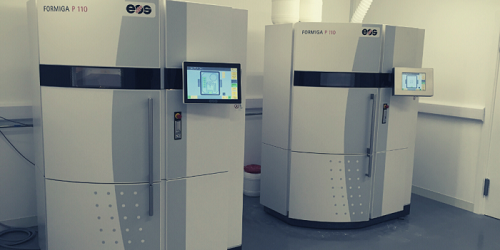Clearly, you should not expect ‘everything’ from 3D printing; the name of the game is ‘compromise’. If you are involved with project management, you may be familiar with the triple constraint of cost, time and quality (for a given scope). If you have not heard of this before, the crux is that there is a three-way trade-off: you can improve one of the three but it will cost you in terms of one or both of the others. For example, you can make something cheaper but it will take longer and/or quality will be lower.
3D printing is rather like that. Bearing in mind that ‘3D printing’ covers a multitude of technologies (we have five in-house at Prototype Projects), this type of additive manufacturing is quick and reasonably accurate. However, the cost per part is considerably more than for mass-produced injection moulded parts. Compared with injection moulding, the main advantages of 3D printing are speed and ‘toolless’ production.
Before you order 3D printed parts, make sure you know what it is that you want. Which of these factors are important to you?
speed
dimensional accuracy and stability
material properties
finishing options
low cost
aesthetics
functionality
If you answer ‘all of the above’, you may be disappointed!
3D printing or something else?
3D printing is not a panacea and never will be, though it is exceptionally good for certain things and continually improving. But if you need high-accuracy parts for a functional prototype, CNC machining from solid could be a better option. Alternatively, if you require hundreds of components with good part-to-part consistency, injection moulding from soft (aluminium) tooling could be more appropriate. The drawback here will be a far longer lead time, plus there will be a one-off tooling cost.
On the other hand, if the part is for a visual model, 3D printing could be fine. Or if multiple parts are needed, perhaps vacuum casting from a 3D printed master pattern would be best.
Caveat emptor
We seldom use Latin on the Prototype Projects website but ‘caveat emptor’ is a commonly used phrase meaning ‘let the buyer beware’. In this context, we mean that you need to be aware of the risks associated with 3D printing, as well as the benefits – of which you are no doubt well aware.
3D printing technologies have been developed for building parts rapidly. Depending on the technology used, the part’s accuracy and dimensional stability may be good but they are unlikely to be comparable with those of injection moulded parts. Another issue to be aware of is part-to-part consistency. As 3D printing technologies improve, so does consistency but, again, it will not be as good as for moulded parts. If a 3D printer is run twice with the same material and the same settings, there is no guarantee that the resultant parts will be 100 per cent identical.
Furthermore, 3D printing is a complex process, regardless of which technology is employed, so there is always scope for something to go wrong. This could result in voids, weaknesses in the interlayer bonding, warpage, cracking, incomplete curing of liquid resins or other issues. When we spot a fault while the part is being built or during inspection, we will rebuild the part. Our experienced operatives might alter one or more of the machine settings, and sometimes several attempts are required, but all of this can jeopardise delivery dates.
Because of the nature of 3D printing technologies, sometimes we can avoid faults occurring by modifying the part design (with the customer’s agreement). Alternatively, we might suggest building the part with a different material or 3D printing technology, but this could mean the material properties are slightly different from what was requested.
Express Service for 3D printing
If your project has particularly tight timescales, we offer an Express Service, with parts dispatched the next working day. However, we have to limit the choice of 3D printing technologies and materials in order to achieve this rapid turnaround. Finishing options are restricted too. Of course, doing things quickly always increases risks. It all comes back to the triple-constraint of cost, time and quality. 3D printing can require compromises to be made. Nevertheless, we always work with customers to manage expectations and ensure the part is fit for purpose and the lead time is acceptable.
What is 3D printing best for?
Despite the foregoing, we maintain that 3D printing is incredibly versatile and cost-effective, otherwise we would have ceased offering it as a service. Our customers use 3D printing throughout every stage of product development, from early proof-of-concept models, through to visual models for backers and marketing, handling models, functional prototypes, usability trials and for developing assembly systems. In some cases, 3D printing is suitable for low-volume production parts.
Whatever your intended use for 3D printed parts, you need to be aware of both the benefits of 3D printing and the limitations. It is also vital to ensure the optimum technology and material are selected, otherwise, the results can be disappointing.
